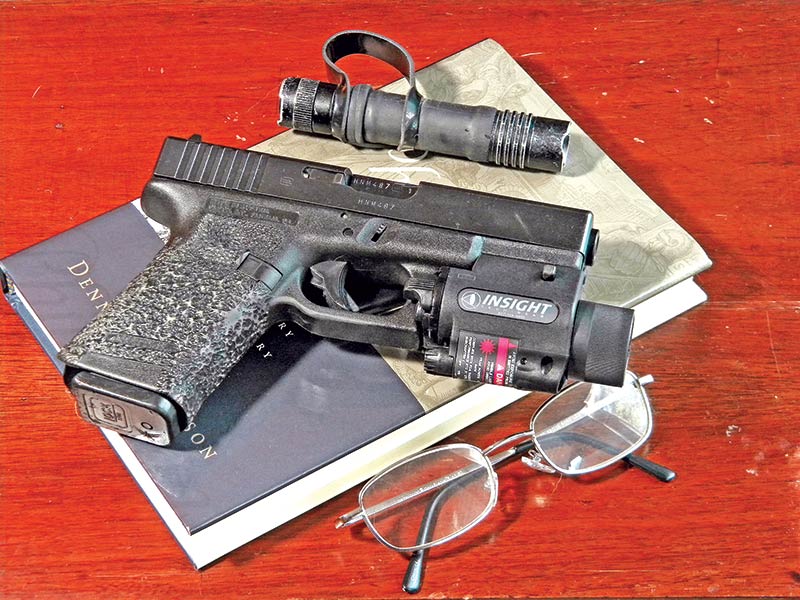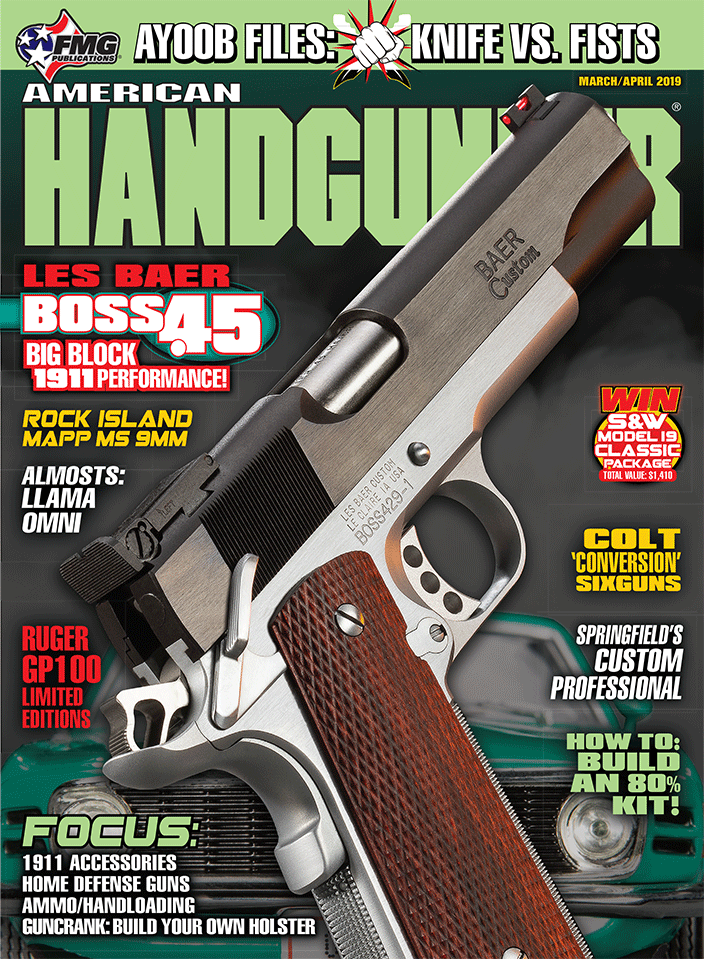Defensive Firearms For Home
Is A Handgun Best?
There are lots of factors to consider here, and a variety of firearm types to select from. Which is best — handgun or shotgun? What about the .223/5.56 AR platform? The answers depend upon your needs.
Handguns are at the top of the list when it comes to self-defense. The handgun is small, so it’s easily concealed and carried. It’s most likely the weapon you will have when confronted with sudden danger. Both revolvers and semi-autos are reliable and simple to operate. Revolvers are the simplest — but the most difficult to use well. They are not the “perfect” firearms for beginners. Semi-autos seem more complicated, but are actually easier for beginners to learn how to operate, reload and shoot accurately. And it’s going to take multiple shots to stop the threat — handguns are underpowered. The numbers you see most often in self-defense shootings with handguns are three and four shots fired.
Both revolvers and semi-autos can be equipped with lights and lasers, and you need a light to identify the threat. Every year people mistakenly shoot family and friends inside their home because they didn’t identify the “threat.” A laser helps accurately engage under less than ideal conditions when you may not be able to acquire a perfect firing position.
A handgun has multi-uses. It may be carried during the daytime for self-defense, then at bedtime you attach a light/laser combo onto the pistol and it’s ready for home defense.
Shotguns
Ashotgun does a great job at stopping threats, but isn’t the “holy grail” of home defense. Shotguns have some disadvantages. Along with “stopping power” comes recoil, especially single shot, doubles and pump actions. A great option is the 20 gauge. Not as much recoil as the 12, with almost the same payload of ammo downrange. Semi-autos absorb some recoil during ejection and feeding, but can be ammo sensitive. A single shot or double can be used for defense but are less than ideal. The pump action will run almost any ammo, but is often difficult for people to cycle, especially under stress.
You can also easily upgrade sights, add lights/lasers or anything else meeting your needs. There’s a wide variety of ammo available too. Feed ’em well, using defensive rounds designed to produce tighter patterns. You still have to aim — shotguns are not the “point-’n-shoot” weapons seen in the movies — and aiming is easier with a red-dot sight. Test fire to ensure reliability, and at different distances to see how the rounds will pattern using measurements from inside your home. Long distance accuracy can be difficult. Slugs extend the range, but over-penetration is a huge concern. The scattergun is versatile, and can be used for home defense — and putting meat on the table.
An AR
My choice for home defense is the AR. The AR is lightweight, simple to operate and ultra-reliable, providing rifle-velocity stopping power. Yet .223/5.56 defensive rounds penetrate less sheetrock, plywood and such than handgun bullets. You can configure it in a variety of ways, and its modular design allows you to swap uppers in a minute, completely re-configuring your AR. A lightweight carbine, at around six lbs. with an adjustable stock, can be used by almost anyone in the family regardless of their size.
The AR is accurate from three to several hundred yards. Firing on someone at 300 yards is hard to justify, but some “homes” — which include the yard or adjacent land — are large. Stopping the threat at the gate to your driveway at 70 yards is much better than having to fight them at the front door. A lot of people have heard the saying, “A pistol is used to fight your way to the rifle.” The full saying includes “… fight your way to the rifle you should have never set down in the first place.” What you have within reach is what you’ll use.
Choosing a weapon for home defense is a serious process. What fits your needs and your home environment? Can all responsible members of the family use it? Remember, part of owning a firearm is ensuring they are secured, preventing access to anyone who isn’t “on the list.” Regardless of the gun, you need to get training on how to use it safely and efficiently. Then, after training, comes plenty of practice.
Preparing includes the complete family. Even if they are unarmed they can contribute. Rehearsal is required so everyone knows what their jobs are. Keep things as simple as possible. Remember, you can’t be ready for everything — but you can be prepared for almost anything.







